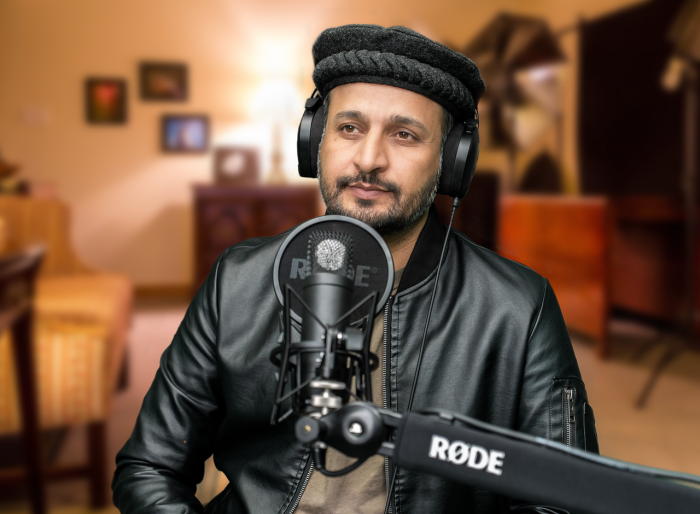We live in a world where information travels faster than ever. This is great for content creators, but at the same time they have an interesting challenge to overcome–how to connect with audiences who don’t speak the same language or share the same cultural context.
Translating content is no longer any trouble at all. You can see that in the Netflix shows, YouTube tutorials, and international podcasts. But getting something to feel local means more than translating. This is the point where artificial intelligence can help.
Did you know that this year alone the AI market is to grow to around 244 billion US dollars? By the year 2030 it will be well beyond 800 million US dollars. Right now you can find AI-driven programs that can help you clone a voice, make culturally aware edits, and match sentiments, and probably many other things when it comes to localizing spoken content.
This article offers some insights into how AI is - and will continue to - turning traditional translation into something far more powerful and personal.

Translating content is just the beginning
Translation has always been a major part of bringing content to many countries and cultures. Think of movies and TV shows, and that was just the start. Let’s say you’re an influencer or maybe you have your own company and you need to spread a word about a product or service to a global audience. In some cases, it’s enough to assume people know English.
But what if you want to translate your video from Spanish to English? Well, you can use a Spanish to English audio translator where your Spanish audio can get English subtitles. This way you get global access with a touch of exoticness that the Spanish language brings.
Going beyond word-for-word
When using AI programs, you should know they don’t stop at just swapping words. Traditional translation often misses out on nuance, especially in spoken content where tone, humor, idioms, and emotion carry just as much meaning as the words themselves.
New translation models are trained on spoken languages and large multilingual datasets. They analyze the entire structure of the sentence, context, and even speaker intent to give you translations that are far more natural and fluid. The best part is, they know how to recognize idiomatic expressions and regional slang, and to find the closest culturally relevant equivalent in the target language.
For instance, you could be translating a Chinese video, and there’s this idiom that word-for-word means ‘to catch a turtle in a jar.’ It sounds rather mystifying and you might wonder what a turtle and a jar have to do with, let’s say, a cosmetic product. Is something made out of turtles? But then your new AI program comes to rescue, saying that the idiom in question means ‘to make oneself an easy target.’ That’s so much better than translating word for word, right?
From subtitles to synced voices
Subtitles are cheap and fast, and they still serve their purpose, especially with large broadcasting companies. Can you imagine watching a movie without subtitles? Still, there’s this tiny issue where you have to split your attention between audio and text.
Maybe you're not a fast reader or you’d just like to look at actors and not miss a bit of their expressions (we see you, Tom Hiddleston fans), so this is the time for voiceovers. It’s more immersive, but sometimes costly and hard to sync convincingly. Neither approach, on its own, nails the goal of making you feel like the content was made just for you.
AI’s role in voiceovers
Fear not, AI has a magic bag full of tools that go beyond surface-level translation. Imagine watching the Loki series in Finish or Norsk, with the true actors’ voices. Wouldn’t that be nice? Because new tools can learn and understand the intonation, rhythm, and emotional cadence of a speaker.
They can bring you a realistic speech that mirrors a person’s tone, even when it comes to their accent, in a different language. And yes, you can do the same for your own content or commercial, in as many languages as you want.

Why tone matters
The experts say that words bear only 7% of all communication. Tone and body language are the heavy lifters when it comes to delivering a message.
Perhaps you’ve seen a movie about three men and a baby where a man reads a bedtime story to a baby–about a boxing match. He says the words are not important, but the tone.
Or, have you tried employing an AI face for your content? It looks beautiful but the voice is flat and emotionless and no matter how thrilled you were, something just wasn’t right for your audience and the content’s impact flopped? Yeah, you need a tone.
The way something is said can completely change how it’s received. For years, this has been one of the hardest parts of localization to get right. AI can change that with sentiment analysis algorithms. It’s now able to recognize the emotional undercurrent of speech (like joy, sarcasm, frustration, or sincerity) and adjust it to the localized version accordingly. And when this data is paired with voiceover tools, the emotions of the content remain intact, despite the language change.
You think it’s not that hard? Just think about the famous British humor. It’s mostly a cultural feature, and many Japanese would find it hard to understand an English joke. Or you can be as passionate as you’d like in Spanish, in German you’ll sound cold and detached. Is it the fate of the world–or can you change it by using the right software?
Cultural sensitivity and contextual adaptation
Yes, in short, you can bring change. Let’s say you want to translate an US podcast and one of the participants uses a sport reference to baseball. To localize it to Brazil, you can swap it for a soccer reference, and for India you can use cricket. The goal is to keep the meaning without losing connection.
You can avoid confusing your global audience, potentially insulting them with the wrong reference, slang, or metaphor. This kind of deep cultural adaptation used to require human translators that are experts.
AI can now assist (not replace, mind you) those experts and offer suggestions and raise red flags in areas for further review. It creates a hybrid workflow where if a human translator misses something, a machine can pinpoint what and help.
Voice cloning and personalized narratives
You can replicate your voice in multiple languages in order to create personalized content. This can bring dubbed versions of podcasts, videos, and even audiobooks that keep the identity and familiarity of the original speaker, whether it’s you or anybody else you like.
So your favorite Italian podcaster can speak to you in your language and still sound like them. That consistency builds trust in a global audience who might not understand the original language but still want to connect with the voice behind the message.
Apart from entertainment, you can use this feature in learning. Your instructor’s voice consistency can improve retention and engagement.
So you don’t have to lament over the fact that Tom Hiddleston recited Pi numbers–you can have him read you the entire study book. You might want to see if you need a permission or two to make this happen, but as long as AI is concerned, anything is possible.

Connecting international audiences with AI
Soon, AI won’t just help a video talk to an audience–it’ll help it talk with them. People might be able to ask questions, change the voiceover language on the fly, or even choose the dialect that matches their region.
There’re so many possibilities, and having translations, transcriptions, and voiceovers is just the beginning.
Understanding the context of the content, its cultural background, and how to bring it to another language and maintain the tone and humor (if there’s any) once looked impossible–but look at us now! The level of personalization is amazing.
Tools are getting more creative and culturally fluid. We’re already witnessing it in the real-time translation apps and multilingual customer service chatbots. So why not bring it to another level and have some more fun?
Petra Rapaić is a B2B SaaS Content Writer. Her work appeared in the likes of Cm-alliance.com, Fundz.net, and Gfxmaker.com. On her free days she likes to write and read fantasy.
Post Comment
Be the first to post comment!
Related Articles

Customizing AI Bots for Day Trading vs Swing Trading
Apr 21, 2025 . Marketing
Protect Your Digital Life Without Sacrificing Speed
Apr 16, 2025 . Marketing